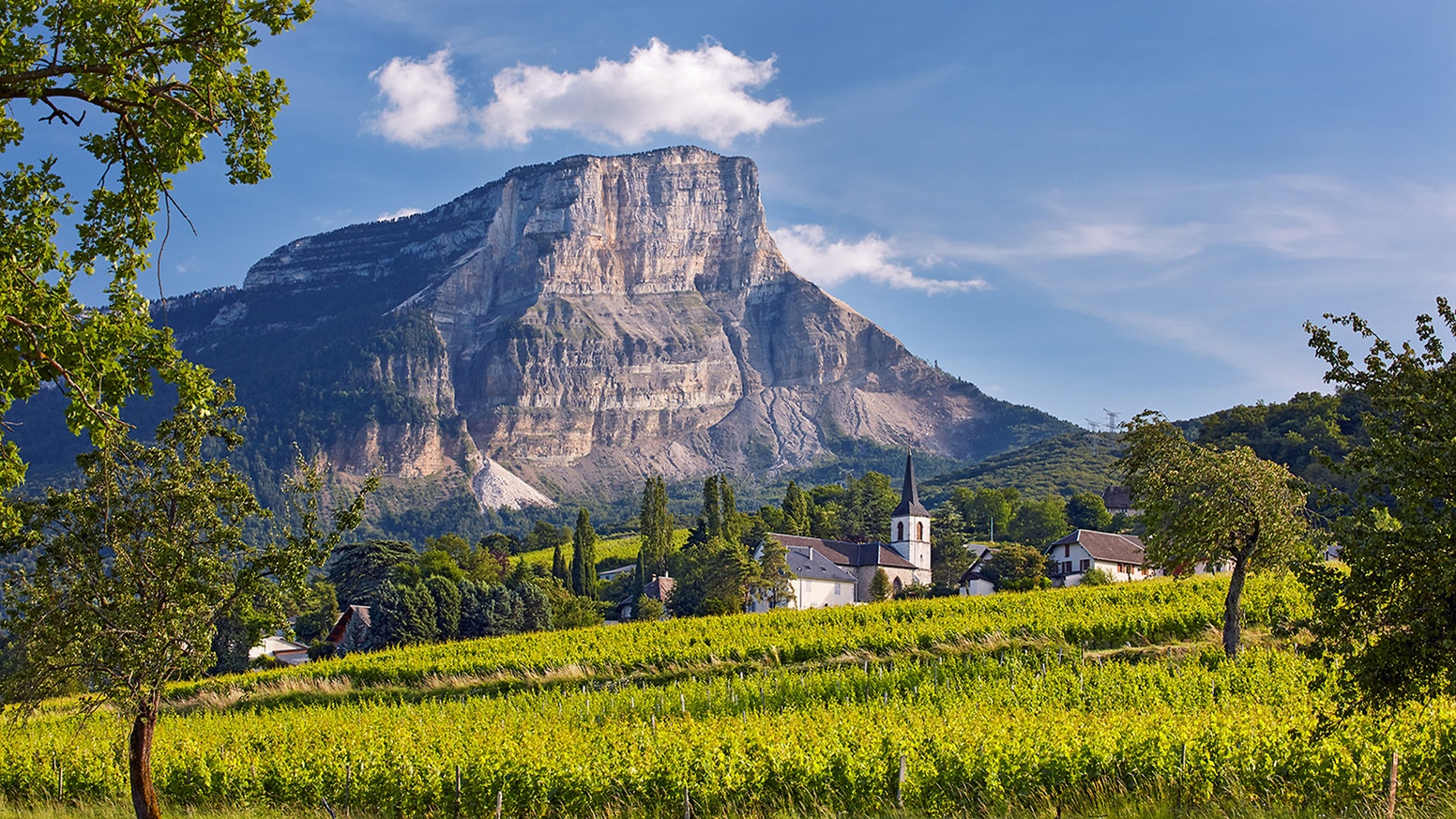Vins de Savoie

As the Tour de France approaches its premier high-mountain stages, it makes a return to the Savoy region - site of famous Tour duels, as well as the home of Mt. Blanc and a collection of Winter Olympic towns. As the world focuses on the climbs from Annecy to Albertville to Alpe d'Huez, we explore a different way to see the region by bike: vineyard by vineyard, exploring the wines of Savoie.
Many of the vineyards of the region are clustered, making for an easy way to explore by bike. While your individual itinerary should be guided by taste preferences, here are a few of our favorite wines from the wine growing region of the Savoie, and a few interlopers from neighboring regions to get you started. Snow capped peaks, wildflowers, and alpine streams make Savoie a picture perfect growing region, and high elevation vineyards, (bordered by Switzerland to the East, Jura to the North, and Bugey to the West), provide Savoie with a unique microclimate that is at once alpine yet surprisingly warm due to south/southeastern exposure, and a most wonderful setting for a bike tour followed by a crisp glass of wine.
Andre et Michel Quenard Savoie Chignin Blanc "Vielle Vignes"
Michel Quenard farms 22 hectares of his family estate (founded after WWI) and makes wine on the Coteau de Torméry near Chignin. These steep limestone vineyards are responsible for a minerality and freshness that comes through in all of their wines. We're partial to the Vin de Savoie Chignin "Vielle Vignes" from 70+ year old Jacquère vines, a white grape native to Savoie. Rich and perfumed with pear and white flowers, this wine also shows off that classic alpine "mountain stream" minerality.
Patrick Bottex Bugey-Cerdon
While technically not located in the Savoie, this tiny region sandwiched between Grenoble, Lyon, and Geneva often gets lumped in due to its tiny size and under the radar nature. Only just having received AOC status in 2009, this alpine hamlet produces white, red, and rose wines, but it's most well known for it's pink sparkler, Bugey-Cerdon, which can be made from either 100% Gamay or a blend of Gamay and Poulsard. Bugey-Cerdon must be made in the methode ancestrale, an old process that predates methode Champenoise, or the technique that gives Champagne it's fizz.
The story goes that in the high alpine climate predating modern refrigeration, fermentation after harvest would typically stop due to cold temperatures, and winemakers would throw up their hands and bottle the wine before all the available sugar could be converted to alcohol. But when temps would warm up in the springtime, fermentation would spontaneously restart in the bottle, leading to a wine that's slightly fritzed and slighty sweet.
We love this wine from Patrick Bottex for it's strawberry and tart cherry fruit and it's delightful spritz. An absolutely perfect wine to enjoy while watching the Tour.
Jean Perrier et Fils Cuvee Gastronomie Mondeuse
Native to the Savoie, Mondeuse is a rustic varietal with tannin and spice reminiscent of Syrah, with tart and bright red fruit on the nose and a slightly bitter component.
The Perrier family has been growing grapes in the Savoie since 1853, and Gilbert and his son are fifth and sixth generation winemakers. Sustainable in the vineyards, and hand harvested, their Mondeuse is a bright, tart rasberry and cherry delight with medium body and an intriguing earthy spicy. With plenty of acidity and ringing in at 12%, this is red we can get behind for summer drinking during the Tour.





